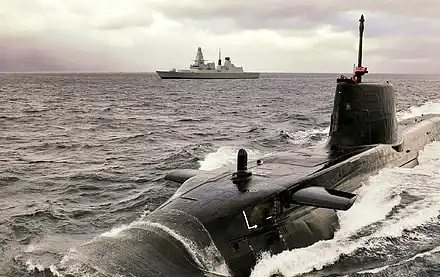




Leonardo
The Global Combat Air Programme (GCAP), comprising the governments of the UK, Italy, and Japan, along with the lead industry partners BAE Systems (UK), Leonardo (Italy), and Mitsubishi Heavy Industries (Japan), has presented a new concept model of their forthcoming combat aircraft at the prestigious Farnborough International Airshow.
This collaborative showcase marks a significant milestone in the progress toward the delivery of a next-generation combat aircraft. The unveiled concept model, featured in Hall 5, exhibits a notably refined design with an expanded wingspan aimed to enhance future combat aircraft's aerodynamics at enhancing the aerodynamics of future combat aircraft.
Engineers from BAE Systems, Leonardo, and Mitsubishi Heavy Industries are engaged in close collaboration under a partnership agreement to advance the design and development of the impending combat aircraft, utilizing innovative digital tools such as computer-based modelling and virtual reality to refine the aircraft’s design during its conceptual phase.
Guglielmo Maviglia, Chief Global Combat Air Programme Officer at Leonardo, emphasized the remarkable pace of the programme’s advancement, underpinned by the solid industrial legacy and entrenched partnerships in each participating country. The commitment from each partner, with their distinct yet complementary qualities and requirements, has facilitated knowledge exchange, addressing common challenges and achieving shared objectives, positioning GCAP as the future cornerstone of combat air capability with a System of a Systems perspective.
Herman Claesen, Managing Director of Future Combat Air Systems at BAE Systems, highlighted the close collaboration with industrial partners in Italy and Japan, as well as the alignment of requirements with the three governments, reflecting notable progress in the design and conceptualization of the future fighter jet. The ongoing refinement and testing of the design signify subsequent phases of the program.
Hitoshi Shiraishi, Senior Fellow at Mitsubishi Heavy Industries, Ltd, underscored the value of the GCAP as an opportunity to deepen knowledge, particularly through the amalgamation of diverse cultures, experiences, and knowledge of the three industries involved, to yield enhanced results and comprehensive insights. Shiraishi also expressed hope for the program's role in fostering innovation and human resource development in science and technology within Japan's industrial sector.
The combat aircraft, slated for service in 2035, is poised to be a pioneering, interoperable, and connected fighter jet, featuring an intelligent weapons system, a software-driven interactive cockpit, integrated sensors, and a powerful next-generation radar, ensuring a substantial tactical advantage with its capability to provide 10,000 times more data than current systems. GCAP stands as a strategically significant partnership, integrating the governments of the UK, Italy, and Japan and their respective industries, thereby aligning military and industrial objectives in the delivery of a next-generation combat air capability.
The program’s profound impact on the security, political stability, and economic prosperity of each participating nation is underscored, with effective knowledge and technology transfer serving to evolve and fortify crucial sovereign combat air capabilities for future generations. Furthermore, GCAP is anticipated to drive the employment of a substantial workforce across the UK, Italy, and Japan, contributing to the development and proliferation of industrial skills and technologies.